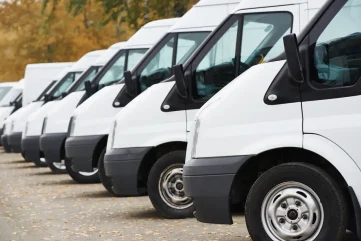
The new LCV market declined by 2.1% year-on-year in the plate-change month of September with 47,418 units registered, according to the Society of Motor Manufacturers and Traders (SMMT).
The drop in sales continued the year’s downward trend but was 2025’s smallest monthly decline, the SMMT said. New LCV sales in the first nine months of the year fell by 9.8% to 241,264 units.
Sales in the high-volume 2.5t to 3.5t sector, which contains medium and large vans and commands 70% of the market, rose by 3.2% to 32,670 in September. Pick-up sales also increased, up 7.8% to 5,749, as did sales of minivans weighing less than 2.0t, which edged up 1.9% to 1,202.
On the other hand, registrations in the niche 4×4 segment dipped 13.4% to 647 and compact van sales (2.0-2.5t) dropped by 25% to 7,150.
Electric van uptake jumped 41.1% in September to 4,262 registrations, while in the year to 30 September sales of plug-in vans leapt by 55.9% year-on-year to 22,118 units to take a 9.1% share of the overall market. This, however, remains well short of the 16% called for by the UK Government’s ZEV mandate.
The Ford Transit Custom was the UK’s biggest-selling LCV in September with 7,725 registrations, ahead of its stablemates the Transit (4,762) and Ranger (3,109). The Volkswagen Transporter (2,256), Peugeot Partner (2,203), Vauxhall Vivaro (2,052), Renault Trafic (2,049), Mercedes-Benz Sprinter (2,015), Toyota Hilux (1,525) and Volkswagen Crafter (1,179) completed the top 10.
Ford continued its dominance of the overall LCV market in September with 17,721 sales, ahead of Volkswagen (5,236) and Peugeot (3,8121).
Commenting on the state of the market, Mike Hawes, SMMT boss, said: “September is one of the busiest months for the new van market so a slight dip in volumes compared with previous strong years is disappointing but unsurprising.
“The growth in electric van uptake is hugely encouraging, but the market is under pressure to deliver the investment necessary for decarbonisation.
“Manufacturers are delivering a huge choice of models to suit all businesses – now we need better dedicated infrastructure and continuing incentives to drive the switch.”





